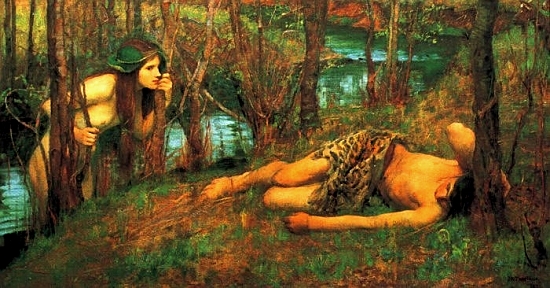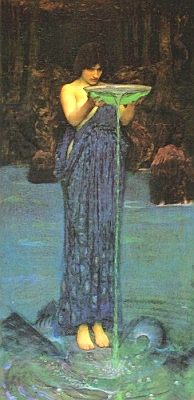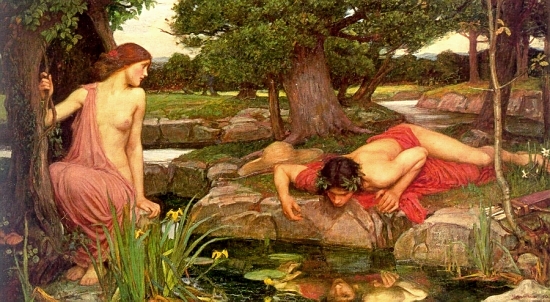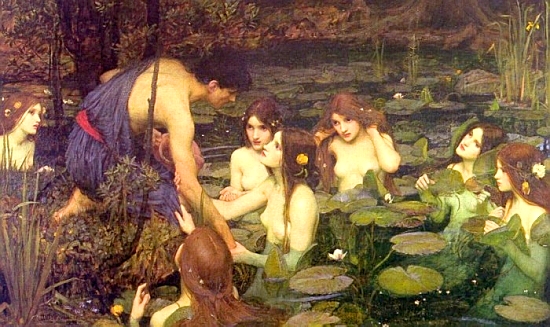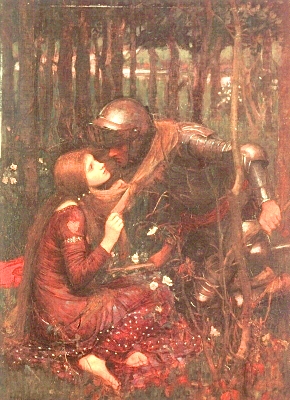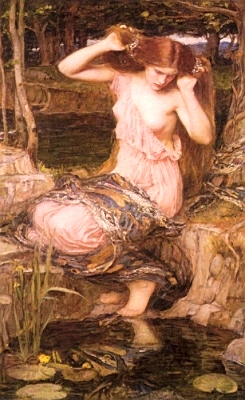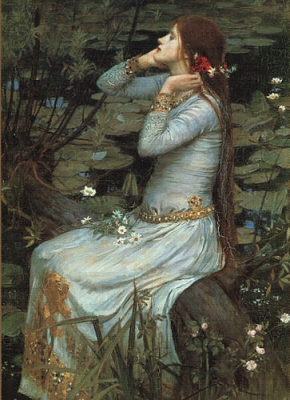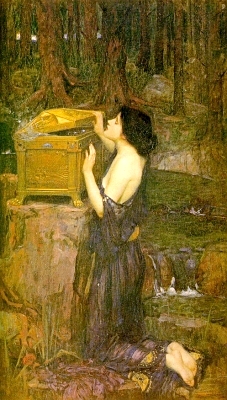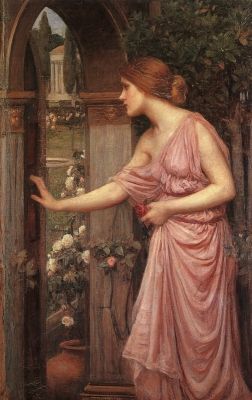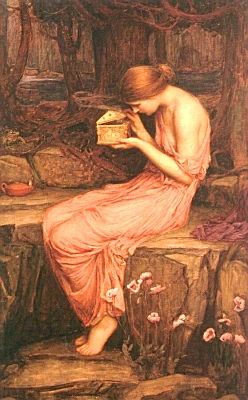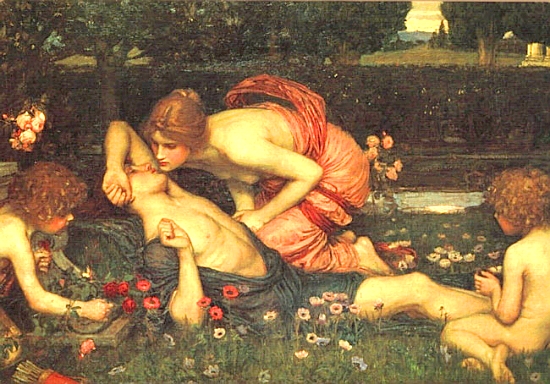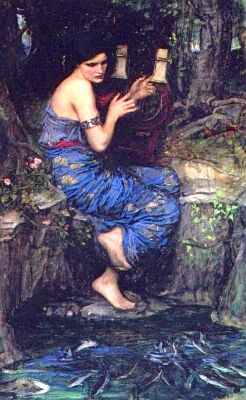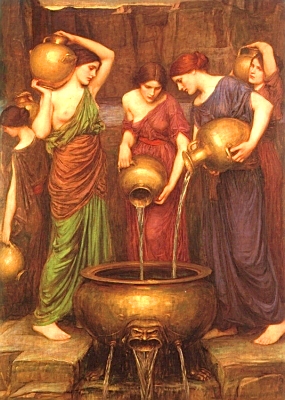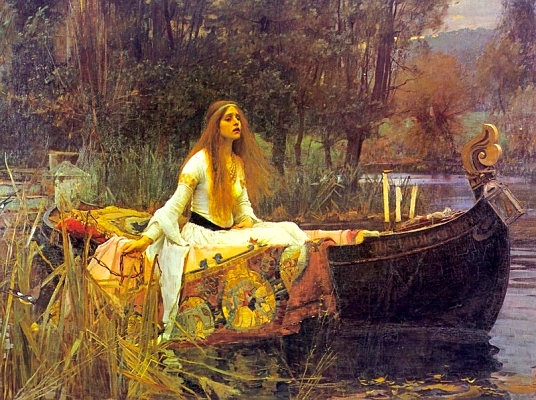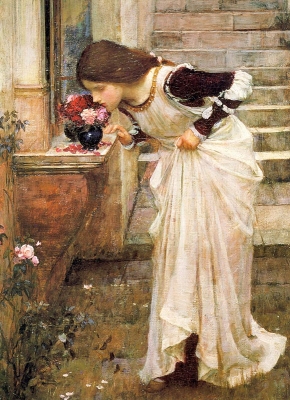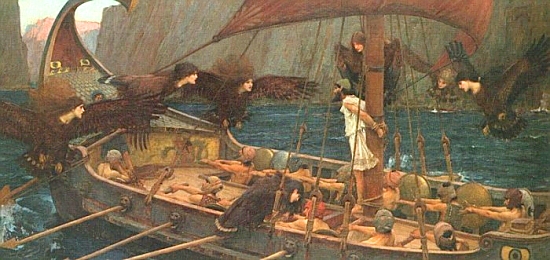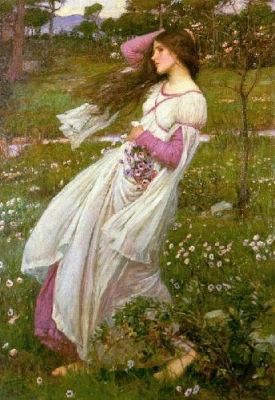1849-1917
I
1848 grundlagdes The
Pre-Raphaelite BrotherhoodTaf
en gruppe unge engelske malere, der havde deres egne forestillinger om,
hvordan et maleri skulle være. De følte sig lammede af The Royal
Academy med dets stive og fastlåste ideer om, hvordan smagfuld og skøn
kunst burde være.
The
Pre-Raphaelite Brotherhood
mente, at den eneste form for ægte stor kunst stammede fra tiden før
1500-tallets italienske maler, Rafael.
Han repræsenterede renæssancens højdepunkt, hvor malere i stedet for
at lade motiverne styre billedernes indhold, manipulerede med motiverne,
så disse passede til malernes egne skønhedsidealer – hvorved enhver
form for realisme forsvandt. The Pre-Raphaelite Brotherhood
afviste denne form for idealisering og skabte derimod værker baseret på
rigtige landskaber og rigtige modeller og med stor omhu i detaljer og
farver.
John
William Waterhouse, der blev født i 1849, var selvsagt ikke medlem af The
Pre-Raphaelite Brotherhood (der i øvrigt opløstes efter kun tre år),
men hans billeder er noget af det ypperste indenfor stilen – der hos
Waterhouse rammende kan beskrives som post-præ-rafaelittisk. Hans
teknik er uovertruffen, og væk er de oprindelige præ-rafaelittiske
stive modeller, som typisk ses hos bl.a. Dante Gabriel Rossetti
og Edward Burne-Jones.
Han forfalder heller ikke til det tilløb til lummerhed, man kan se hos
nogle af hans samtidige post-præ-rafaelitter, f.eks. Lawrence
Alma-Tadema og Fredric Leighton.
In
1848 The Pre-Raphaelite Brotherhood was founded by a group of young
English painters who had their own conceptions of what a painting should
be like. They felt paralysed by the Royal Academy with its rigid and
fixed ideas about tasteful and beautiful art.
The Pre-Raphaelite Brotherhood believed that the only true great art was found in the time before the 14th-century Italian painter, Raphael. He represented the climax of the Renaissance where painters, instead of letting their motifs guide the contents of their paintings, manipulated the motifs to fit their own ideals of beauty – thus losing any kind of realism. The Pre-Raphaelite Brotherhood rejected this form of idealisation and created works based on real landscapes and real models and with meticulous care for detail and colour.
Born
in 1849, John William Waterhouse was obviously not a member of the
Pre-Raphaelite Brotherhood (who, by the way, disbanded after only three
years), but his paintings represent the best in the style – which in
the case of Waterhouse fittingly may be called post-pre-raphalite. His
technique is unsurpassed and gone are the rigid models typically seen in
the paintings of e.g. Dante Gabriel Rossetti and
Edward Burne-Jones.
Neither does he succumb to the touch of semi-pornographic suggestiveness
of some of his contemporary fellow post-pre-raphaelites, e.g. Lawrence
Alma-Tadema and Fredric Leighton.

